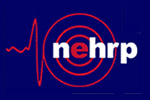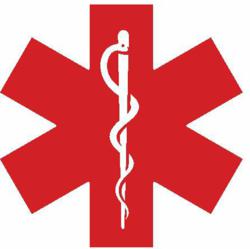Basic Animal Emergency Services Training (BAEST) March 17th Class Deadline is this Friday
February 29, 2012 Basic Animal Emergency Services Training (BAEST), taught by the American Humane Association, costs $180 per person though CERT Volunteers who register through Catherine Cochrane can get in free! Registration is on a first come, first served basis. The registration deadline is this Friday, March 2nd. Click graphic to the right for details.
Basic Animal Emergency Services Training (BAEST), taught by the American Humane Association, costs $180 per person though CERT Volunteers who register through Catherine Cochrane can get in free! Registration is on a first come, first served basis. The registration deadline is this Friday, March 2nd. Click graphic to the right for details.
Steps to Comprehensive Business Planning and Preparedness
February 28, 2012 Got a business on Vashon? Here’s what you need to know to avoid disruption after a fire, a storm, a pandemic, or an earthquake. It is courtesy of the Washington State’s Emergency Management Division’s Business Preparedness Website, that includes a ton of additional resources to help your business survive!
Got a business on Vashon? Here’s what you need to know to avoid disruption after a fire, a storm, a pandemic, or an earthquake. It is courtesy of the Washington State’s Emergency Management Division’s Business Preparedness Website, that includes a ton of additional resources to help your business survive!
iPhone (and Android) Apps for Ham Radio
February 21, 2012 This handy list (and mini-reviews) of iPhone apps for ham radio enthusiasts is courtesy of Keith Francisco – or more likely from http://www.k0nr.com/wordpress/2011/04/the-incomplete-list-of-ham-radio-iphone-apps/ – in either case, thanks!
This handy list (and mini-reviews) of iPhone apps for ham radio enthusiasts is courtesy of Keith Francisco – or more likely from http://www.k0nr.com/wordpress/2011/04/the-incomplete-list-of-ham-radio-iphone-apps/ – in either case, thanks!
Amateur Radio (Ham) License testing session on Vashon
February 21, 2012
Cascadia Mega-Quake Threat-- Even Larger than Previously Thought?
February 21, 2012 Japan’s Tohoku earthquake last year has provided valuable data that is altering scientists’ understanding of our local Cascadia earthquake potential. Geologists have documented some 22 megaquakes over the last 10,000 years - every 200 to 1,000 years, averaging some 500 years. The region’s last was on January 26, 1700.
Japan’s Tohoku earthquake last year has provided valuable data that is altering scientists’ understanding of our local Cascadia earthquake potential. Geologists have documented some 22 megaquakes over the last 10,000 years - every 200 to 1,000 years, averaging some 500 years. The region’s last was on January 26, 1700.
Reducing the Risks of Nonstructural Earthquake Damage—A Practical Guide, Fourth Edition (FEMA E-74)
February 9, 2012 Reducing the Risks of Nonstructural Earthquake Damage—A Practical Guide, Fourth Edition (FEMA E-74)
Reducing the Risks of Nonstructural Earthquake Damage—A Practical Guide, Fourth Edition (FEMA E-74)
Course Description
Nonstructural components of buildings include all elements that are not part of the structural system; that is, the architectural, mechanical, electrical, and plumbing systems, as well as furniture, fixtures, equipment, and other contents. During the recent earthquakes in Chile, New Zealand, Japan, Virginia and other earlier earthquakes in California, Washington, and other parts of the U.S., nonstructural failures have accounted for the majority of damage and injuries. In many cases, businesses, schools, hospitals, and other organizations had to spend excessive time and dollars for clean up and repair due to nonstructural failures; therefore impeding continued operations and rapid recovery. Moreover, nonstructural component failures also impeded safe evacuation, delayed rescue, and caused additional hazards such as fire resulting in serious life safety issues.
Read MoreWhat’s the link between our warming planet and our extreme weather?
February 8, 2012 A new National Center on Atmospheric Research (NCAR) web site titled “Weather on Steroids” explores the connection between all the unusual weather and climate change. Getting a handle on the true changes due to global warming requires massive statistical and scientific analyses.
A new National Center on Atmospheric Research (NCAR) web site titled “Weather on Steroids” explores the connection between all the unusual weather and climate change. Getting a handle on the true changes due to global warming requires massive statistical and scientific analyses.
Earthquakes Maps Updated–For Eastern US
February 1, 2012![Figure 3.2.7. Map of the CEUS SSC Project catalog showing earthquakes of uniform moment magnitude E[M] 2.9 and larger. Colored symbols denote earthquakes not contained in the USGS seismic hazard mapping catalog. CEUS SSC Projects Figure 3.2-7.gif](/Portals/1/Graphics/Maps/CEUS%20SSC%20Projects%20Figure%203.2-7.gif)
 Thanks to the NY Times for noting the first update to eastern US earthquake maps in almost a quarter century. Sad that it was apparently only done to spur permitting of nuclear power plants.
Thanks to the NY Times for noting the first update to eastern US earthquake maps in almost a quarter century. Sad that it was apparently only done to spur permitting of nuclear power plants.

